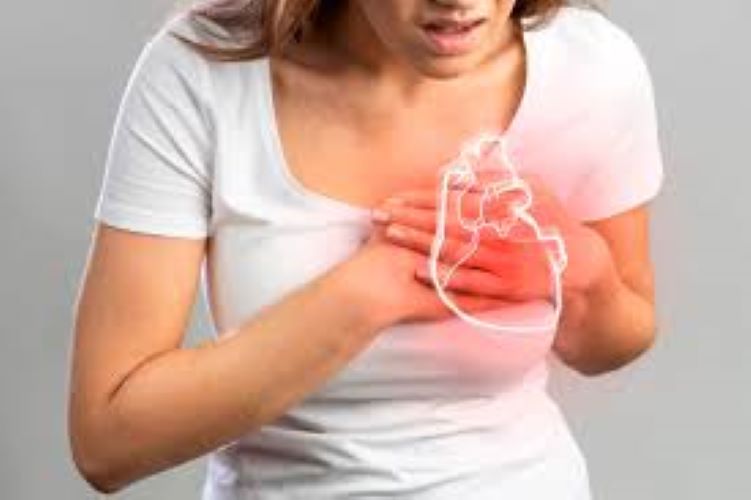Is heart disease a bigger threat to women than breast cancer?

Dr Madan Mohan B
Heart disease is one of the leading causes of mortality and poses a serious threat, silently destroying lives. While this is worrying, what is even more shocking is that women are more prone to death due to cardiovascular diseases than men, and the death toll surpasses breast cancer and all other types of cancer combined. Heart disease ranges from coronary artery disease to heart attacks, claiming about 25 per cent of all mortality in India.
According to the Global Burden of Disease Study, heart disease is the top reason for death in Indian women, which in numbers is more than breast cancer and all other cancers put together. This highlights the urgent need to create awareness among Indian women to take serious care of their hearts.
In the last two decades, the occurrence of coronary artery disease in Indian women has increased by 300 per cent, ranging between 3 per cent and 13 per cent according to research published in the Journal of the American College of Cardiology. As an even more alarming piece of information, the study points out that heart failure in women has doubled, going from 1.1 per cent in 2000 to 2.6 per cent in 2015. This underscores the importance of addressing the growth in heart disease in Indian women.
Indian women are more prone to heart disease because of several risk factors, including high blood pressure, high cholesterol, and diabetes. Studies indicate about 12 per cent of Indian women have diabetes, which is the highest amongst women worldwide. Factors like lack of physical activity, poor diet, and high stress levels among women further increase the risk of developing heart conditions.
Pregnancy and menopause cause extensive hormonal imbalances in women, which in turn affect their heart health. Having gestational diabetes and high blood pressure during one’s pregnancy can result in a long-term risk of heart issues. Indian women have a higher incidence of gestational diabetes, preeclampsia, and high blood pressure during pregnancy compared to the global average, which shows they are more prone to the risk of having a heart disease.
The symptoms of heart disease in men and women are entirely different. While men may experience the common symptom of chest pain, women experience more silent signs like tiredness, dizziness, or shortness of breath. These subtle signs may not encourage women to seek prompt medical help, as they are already subdued by cultural and societal norms. Research shows that women often seek help much later during a heart attack, and hence the chance of getting the best care is reduced, often resulting in worse results.
Women in India, especially those from rural areas, still face inaccessibility when it comes to quality healthcare. Starting from screening for heart diseases, preventive care, and prompt interventions through treatments, the lack of access for women results in contributing to more heart diseases in women. However, mobile health clinics, community health programs, and inclusive schemes are some initiatives that will help women from the underprivileged sections of society access preventive and prompt healthcare.
Awareness will be a key tool to tackle the issue of increasing heart issues among women. It is important to inform and educate women, their families, and the health workforce regarding the risks women in India are prone to when it comes to heart disease. Tools like awareness programs, community initiatives, and media campaigns can be used to spread important information about preventing and managing heart disease among women. Leaving the sedentary lifestyle by incorporating regular physical workouts, balanced meals, and managing stress will be vital weapons against heart disease.
Medical professionals need to be more aware of research findings that suggest silent symptoms among women and provide tailored care to them. Women must also be encouraged to speak up about their health and seek medical attention on time. It will further help in policy-forming and developing evidence-based interventions if there are more women-centric data for cardiac disease prevalence and risk factors.
To understand the impact, trends, and challenges of cardiac diseases in Indian women, prolonged research is needed in the domain. The researched data on women must be used to make relevant policy interventions, prompt treatments, and create a path towards managing cardiac health in women in the best possible ways.
To conclude, females typically do not experience heart problems during menstruation due to hormone levels. However, once they reach menopause, a stage marked by declining estrogen levels, heart issues may arise. This decrease in estrogen, which usually protects the heart, is a widely recognised phenomenon. Nonetheless, some individuals may still face heart problems at a young age, even during their menstrual cycle. So, why does this occur? There are two to three reasons for this phenomenon. Firstly, genetics play a significant role in heart disease. If a person’s parents, either the mother or father, experienced heart problems at a young age, there is a high likelihood that they may also develop them early in life. For instance, if a mother had a heart attack at 45, her daughter might face similar issues at 40, five years earlier than her mother did. This genetic predisposition greatly increases the risk of heart problems.
Secondly, other factors such as high stress levels can contribute to heart problems during youth. Additionally, conditions like diabetes, hypertension, thyroid disease, or other chronic illnesses can also lead to blockages in the heart, exacerbating the risk further. Therefore, a combination of genetic predisposition and lifestyle factors can significantly impact heart health, particularly during menstruation and early adulthood.
Dr Madan Mohan B is Senior Consultant, Interventional Cardiologist at MGM Healthcare

